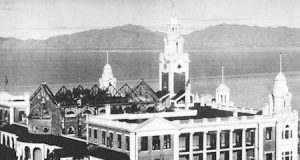
Do the preserved old buildings represent the cultural memory of a city? Is it totally accidental that so many examples of preservation of architecture give people a sense of nostalgia? The essay Building on Disappearance: Hong Kong Architecture and Colonial Space written by Ackar Abbas (1997) argues that architecture preservation is not equal to the memory of Hong Kong, but the painless déjà vu after selection.
The argument can be proved through the study of the Merely Local constructions, which indicates the buildings belong to a specific historical period and have been preserved until now. They have deeply rooted in Hong Kong’s history and topography, since they may reflect the characteristics of contemporary Hong Kong culture. However, preservation is not the same as memory. Lots of the historical building has disappeared in Hong Kong due to some economic or political reasons. For example, lots of the Chinese-style walled villages has disappeared in Hong Kong while what being built on the land are the more profitable skyscrapers. Then lots of the memories related to the old-fashion dwellings vanished with the disappearance of the old buildings.
Meanwhile, the buildings preserved usually are of great economic, political or spiritual value which worth inheriting. For instance, the Main Building of the University of Hong Kong is a gracious example of colonial-style construction. Completed in 1912, the Edwardian Baroque-style building was the oldest structure on the HKU Main Campus as a gift from Sir Hormusjee N. Mody. The building was declared a monument by the Hong Kong Government in 1984 and is still in use, for not only providing space for teaching and learning, but also in memory of the generosity of Sir Hormusjee and conveying the spirit of chasing virtues and wisdom seared in the consciousness of the students since the foundation of HKU.
Part of the city memories of Hong Kong died out with the disappearance of the old buildings, but others will be passed on through preservation. In a sense, Hong Kong culture may develop and evolve from the perspective of architecture.
By Yang Shuran (UID:3035448548)
It is great to raise an example that resonates closely to you. Main Building, being over a century old, has gone through many changes. From the addition of air-conditioning units to elevators, many alterations have been made to adapt to contemporary needs. It may be interesting if you could discuss the changes and sacrifices made to the building in order to maintain this Merely Local status.